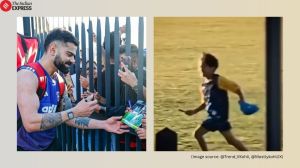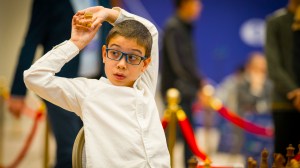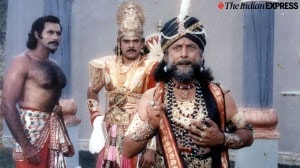When east greets west
Saying it in English is considered trite. Even Spanish and French have become jaded. So about 50 families in Mumbai decided to try their h...

Saying it in English is considered trite. Even Spanish and French have become jaded. So about 50 families in Mumbai decided to try their hand at a more novel brand of swadeshi and learnt to say I Love You in at least seven different dialects of the north east. Of course some of the madcaps from generation next were better at memorizing other phrases in Manipuri and Assamese, but those shall go unmentioned here.
Courtsey 78 students, ranging from the age group of 15 to 25, from the states of Assam, Arunachal Pradesh, Manipur, Meghalaya, Mizoram, Nagaland, Sikkim, Tripura and union territory of Andaman and Darjeeling, a small section of Mumbaikars, who played host to the group, are planning to make the north-eastern frontiers their next tourist destination.
In Mumbai for four days on the last leg of their National Integration Tour, the group said they had a blast in the city and listed it number one on their favourites from the entire tour. Starting from Guwahati around December 18, a group of 36 toured the northern circuit, covering Madhya Pradesh, Chattisgarh, Punjab, Delhi, Rajasthan and Maharashtra. The remaining students visited the southern states, including Goa before they arrived in Mumbai.
Reactions to the city ranged from the predictable, How Big! How Dirty! to the impressive, “Aren’t those the same steps from where Amitabh Bachchan is shot at in that flick?” Temjan from Nagaland could not believe that most of the Bombay Stock Exchange building was centrally airconditioned. Tete from Mizoram marvelled at the number of Gothic and Indo-Sarcenic structures in the city and got a pain in the neck, literally, from looking up at the Gateway, completely mesmerised. Annie from Nagaland loved the visit to Filmcity the most. “We didn’t see Shahrukh or the ladies but saw the sets of Devdas. I cannot believe how real all of it looks when we watch the film.”
Toku from Arunachal Pradesh found the contrast among Mumbaikars unbelievable and slightly unnerving. “Some people are so rich and have such big homes but others seem at the edge of destitution with so little physical space. How does everyone live in this city?” she wonders aloud. Paongam from Manipur echoes her sentiment when he says, “When I see and feel the energy of Mumbai, I am so proud and want to shout out, see see this too is my country. And then I see all these poor people who don’t seem to get many breaks in life and feel so sad and ashamed.”
Most of the students from the two groups feel the entire trip has been invaluable. “I came to know that all of us are either called `chinks’ or Nepalis, even though we might have nothing to do with Nepal,” says Suku from Manipur. “Funny thing is that it is similar to the way we label all south Indians as Madrasis and all northerners as Punjabis. But now no more,” she assures.
Started in 1966 by the Akhil Bharatiya Vidhyarthi Parishad with the aim of cementing an emotional bond, the Students Experience in Inter-state Living (SEIL) has introduced thousands of north-east students to other parts of the country. The students feel that now it is their turn to host such tours. As the union minister for culture and tourism, Anant Kumar, said in his farewell address, “Like the Sindhutsav, we want a Brahmaputrutsav, organised and managed by the students of the seven sister states.”
Till that happens, members of the host families are learning to say Ken Ka Lungset e and Nome Dongo Aaldone (I Love You in Manipuri and Nishing, Arunachal, dialects) while the students aver, Phir Milenge.





- 01
- 02
- 03
- 04
- 05


























